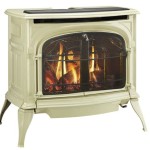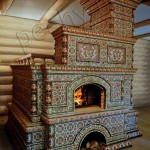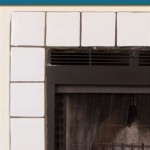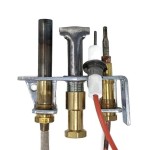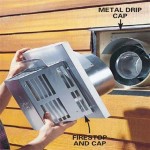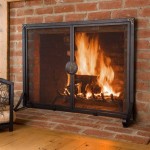Antique Fireplace Equipment: A Guide for Collectors and Enthusiasts
Antique fireplace equipment encompasses a wide array of tools and accessories used to manage and beautify fireplaces from past eras. These items, ranging from simple pokers to elaborate fire screens, not only served practical purposes but also reflected the prevailing aesthetic styles and technological advancements of their time. Understanding the different types of equipment, their historical context, and factors influencing their value is crucial for collectors and anyone seeking to appreciate these artifacts of domestic life.
Understanding the Spectrum of Antique Fireplace Tools
Fireplace tools are perhaps the most fundamental category of antique fireplace equipment. These typically comprise a set of implements designed for tending the fire. Common tools include the poker, used to adjust the logs and coals; the shovel, for removing ashes; the tongs, for manipulating burning pieces of wood; and the brush, for cleaning the hearth. Historically, these tools were often sold as matching sets, mounted on a stand or rack. Examining a set’s design and materials can reveal its age and origin. For example, brass and wrought iron were popular materials in earlier periods, while cast iron and steel became more common later. Styles also varied, ranging from simple, functional designs to ornate Victorian pieces featuring elaborate handles and decorative elements.
The presence of maker's marks or signatures on these tools can significantly increase their value and provide valuable historical information. Marks can often be found on the tool heads or the stand itself. These marks can be researched to identify the manufacturer, the period of production, and sometimes even the retailer that originally sold the set. Collectors often prize complete sets in good condition, especially those with original finishes and minimal rust or damage. Furthermore, the craftsmanship involved in creating these tools varies greatly. Hand-forged tools, exhibiting unique details and imperfections, are often more desirable than mass-produced items.
Beyond the basic tools, there are specialized implements designed for specific tasks. Coal scuttles, for instance, were used to transport coal from storage to the fireplace. Pilgrim kettles, often made of copper or brass, were hung over the fire to heat water. Chestnut roasters, perforated pans with long handles, were used to roast chestnuts over the open flames. These specialized items, while less common than the standard tool sets, offer a more complete picture of the activities that once took place around the fireplace.
The Importance and Variety of Fire Screens
Fire screens served a dual purpose: protecting the occupants of a room from flying sparks and excessive heat, and adding a decorative element to the fireplace. Antique fire screens came in various forms, each reflecting prevailing styles and technologies. Early screens were often simple panels of wood or fabric, sometimes mounted on adjustable stands. Needlepoint screens, featuring intricate embroidered designs, were popular in the 18th and 19th centuries. These screens often depicted pastoral scenes, floral motifs, or family crests.
With the advent of metalworking techniques, metal mesh and perforated metal screens became common. These screens offered better protection from sparks and could be decorated with intricate patterns and designs. Folding screens, also known as cheval screens, provided adjustable protection and could be easily moved or stored. These screens often featured multiple panels connected by hinges, allowing them to be positioned at various angles. The materials used in constructing fire screens varied widely, from simple wrought iron to ornate brass and silver. The quality of the materials and the craftsmanship involved in creating the screen are important factors in determining its value.
Glass fire screens, often referred to as "spark screens," became popular in the late 19th and early 20th centuries. These screens featured panels of colored or etched glass, often depicting landscapes, portraits, or abstract designs. These screens offered a unique combination of functionality and artistry, adding a touch of elegance to the fireplace. The condition of the glass is a critical factor when assessing the value of a glass fire screen. Cracks, chips, or discoloration can significantly detract from its appeal. However, screens with rare or unusual glass designs may command higher prices.
Andirons: Functional Art for the Hearth
Andirons, also known as fire dogs, are supportive structures placed in the hearth to elevate the logs, allowing for better airflow and more efficient burning. Antique andirons range from simple, utilitarian designs to elaborate works of art. Early andirons were often made of wrought iron, featuring simple designs and functional forms. As metalworking techniques advanced, andirons became more ornate, incorporating cast iron, brass, and other decorative elements. Brass andirons, often featuring ball tops or figural designs, were popular in the 18th and 19th centuries. These andirons added a touch of elegance to the fireplace and reflected the affluence of the homeowner.
The style of andirons often mirrored the prevailing architectural and decorative styles of the time. For example, Georgian andirons featured classical motifs, while Victorian andirons were often adorned with ornate carvings and embellishments. The size and shape of andirons varied depending on the size of the fireplace and the type of fuel being burned. Larger fireplaces required sturdier andirons to support larger logs. Andirons designed for burning coal often had grates or baskets to contain the fuel.
The condition of andirons is an important factor in determining their value. Rust, damage, or missing components can detract from their appeal. However, andirons with original finishes, unique designs, or historical significance may command higher prices. The presence of maker's marks or signatures on andirons can also increase their value and provide valuable historical information. Collectors often seek out pairs of andirons that are in good condition and reflect a particular period or style. The weight of the andirons is also a factor. Heavier, more substantial andirons are often considered to be of higher quality and more valuable.

Which Fireplace Tools Do You Need Charles Nijman

Antique French Fireplace Tools T4086a Charles Nijman Antiques

Cleaning Restoring Antique Fireplace Accessories

Tool Sets Vintage Fireplace Tools Adams

Old Brass Iron Fireplace Tools English Country Home

Must Have Vintage Fireplace Tools Adams

Vintage Fireplace Accessories In Brass 1960s Set Of 8 For At Pamono

Antique French Fireplace Tools T4086a Charles Nijman Antiques

Ivyline Fireplace Tools Set Round Antique Copper

Fireplace Accessories Galerieraphaelandco
Related Posts

